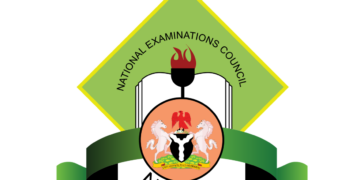The commissioning of the Abuja-Kaduna Train Service in 2016 was a turning point in our quest to revive train transportation in Nigeria using the standard-gauge railway model. At the commissioning of the Abuja-Kaduna Train Service, late President Muhammadu Buhari promised that his administration would also pursue the implementation of the 25-Year Strategic Railway Master Plan aimed at rehabilitating 3,505 existing narrow-gauge lines and constructing new standard-gauge rail lines across the country.
As a newspaper, we recognize that it has been nine years since the Abuja-Kaduna Train Service commenced operations as the flagship Standard Gauge Rail Line in the country. The Warri-Itakpe Rail Line commenced operations in October 2020, followed by the Lagos-Ibadan double-track standard-gauge line in 2021. The 393km Kano-Maradi Rail Line is still under construction, as well as the Lagos-Kano Standard Gauge Rail Line at various stages of completion. However, the incessant disruption of the Abuja-Kaduna train services speaks volumes about the commitment of the government to implementing the 25 Year Strategic Railway Master Plan, and our maintenance culture in public infrastructure.
There is also the case of vandalism of rail infrastructures across the Abuja, Lagos, Kaduna and Warri-Itakpe corridors, which the Nigeria Railway Corporation (NRC) has attributed as a major threat to safe and efficient train operations in the country. While this newspaper recognises the position of the NRC as valid, it still boils down to the maintenance culture in the sense that when adequate provisions are not in place to secure these critical infrastructures, they would be susceptible to vandalism, which would eventually lead to service disruptions.
The Abuja-Kaduna Train Service remain the obvious example, given its history and the sensitivity of the route. It has witnessed two major incidents that were a national discourse, and it is apparent that it has not fully recovered, as its operations have continued to decline in terms of efficient services. This is indeed a worrisome trend that has a socioeconomic effect on the social fibre of the country. From eight shuttles daily to two shuttles is a decline in every ramification. More disturbing are obvious interruptions in economic activities around the route and, very importantly, passengers’ safety.
Today, the Abuja-Kaduna Train Services operates only a shuttle from Abuja to Kaduna and vice versa daily, except Wednesdays, when no shuttle operates. This newspaper gathered that aside test running the repaired tracks, there are not enough coaches to run the regular shuttles. The coaches damaged as a result of those incidents have not been replaced. This remains a major encumbrance in the smooth operations of the train service.
The reality of achieving the 25-Year Strategic Railway Master Plan is grim. The rehabilitation of the 3,505 existing narrow-gauge line that connects over 26 states in the country has remained largely on paper, but for the Lagos-Ibadan corridor and a few others. Going back in history, between 1839 and 1945, rail transportation contributed greatly to transforming the sociopolitical and economic landscape in the country. The first railway line in the country was the Western line that covered about 847 miles, cutting through Abeokuta, Ibadan, Oshogbo, Jebba, Kaduna, and Zaria to Nguru through Kano. The second was the Eastern line, which started from Port Harcourt in 1916 to Enugu, and later extended to Jos and Kaduna in 1932, effectively linking the western and eastern lines. The implication is that there are already well-mapped out rail tracks to cover most parts of the country. Passengers and goods were efficiently transported across the county at the time, and economic activities were boosted. Unfortunately, these narrow-gauge lines have remained comatose for obvious reasons.
It is therefore the position of this newspaper that the standard-gauge lines might toe the line of the narrow-gauge lines if urgent steps are not taken by the government and relevant stakeholders. The decline in the Abuja-Kaduna corridor is a pointer in that direction. It would be a national disaster if it fails, considering the quantum of money that has been earmarked for reviving rail infrastructure in the country. For example, the Sani Abacha-led military regime initiated a three-year $528 million agreement with China Civil Engineering and Construction Company (CCECC) to rehabilitate old assets. In 1999, an additional $158 million was allocated for the project by the Olusegun Obasanjo administration, with very little to show for it.
In 2002, a 25-year strategic vision for the Nigerian Railway was approved, and in 2006, the government signed an $8 billion agreement with China to design, construct, and manage 1,315km of new standard-gauge lines from Lagos to Kano within four years, and by 2007, $250 million was paid as a mobilization fee to start the project. In 2012, the Goodluck Jonathan administration further committed $1.49 billion for the Lagos-Ibadan double-track line.
As a newspaper, we recognize that monies have been expended in reviving train transportation across the country by successive governments, but unfortunately, what we have on the ground is not commensurate with the amount spent. Our position is that those that are functional should be well-maintained to avoid a repeat of the infamous history associated with train transportation across the country.





